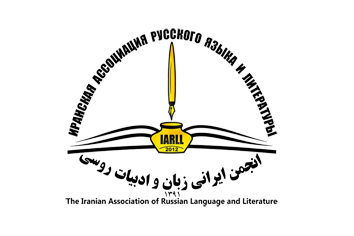FORMATION OF THE FOLK TRADITION OF GUSAN ON THE EXAMPLE OF THE TALE “ASHIK-KERIB” BY M. LERMONTOV
DOI:
https://doi.org/10.61186/iarll.24.9Keywords:
Iran, Gusans, Ashugs, Lermontov, Ashig-Kerib, SufismAbstract
Storytellers have always played a crucial role in the transmission of folk and oral literature, typically categorized into two main groups. The first group consists of ordinary individuals who share folk tales and songs across generations without any specialized skills. In contrast, the second group comprises educated and religious members of society, who must excel in oratory, mastering the art of dance, playing national string or wind instruments, and musical improvisation. These storytellers skillfully blend poetry and prose, demonstrating an acute awareness of vocal tone modulation, all while possessing an impressive memory. Their repertoire often includes myths and tales about heroes, wars, and love. This study focuses on the fairy tale “Ashik-Kerib” by M. Yu. Lermontov, exemplifying the literary richness of the peoples inhabiting the Caucasus region. “Ashik-Kerib,” an Azerbaijani legend, is intricately linked to the Iranian narrative “Mah and Mehr,” which draws from astrological teachings and reflects beliefs in fate and Sufism. Through this examination, we highlight how “Ashik-Kerib” serves as a vibrant representation of the folk tradition of gusan, illustrating the deep cultural connections and storytelling practices that shape the oral heritage of the region. This work ultimately underscores the importance of these narratives in preserving cultural identity and fostering a sense of community among diverse populations.
Extended abstract:
The role of storytellers has always been pivotal in the transmission of folklore and oral literature. They can be categorized into two primary groups: the common people, who relay folk tales and songs from generation to generation without possessing specialized skills, and the second group, which consists of educated and religious members of society. The latter group of storytellers must master the art of oratory to a high degree; they should be skilled in dancing, playing stringed or wind instruments, engaging in musical improvisation, and adeptly combining poetry with prose, knowing when to modulate their voice. Additionally, they must possess an exceptional memory.
This paper examines myths and tales about heroes, wars, lovers, and other themes through the lens of M. Yu. Lermontov's tale Ashik-Kerib, which is recognized as one of the most prominent works representing the literature of the peoples inhabiting the Caucasus region. Ashik-Kerib is an Azerbaijani legend closely linked to the motifs of the Iranian narrative Mah and Mehr, which, in turn, is rooted in astrological teachings, beliefs in predestination, and Sufism.
Through his artistry, the hero-poet in Ashik-Kerib overcomes adversities to attain his beloved. This motif is prevalent among gusans (wandering bards), as observed in the folklore tradition of ashugs (folk poets). At the same time, the tale contains a mythical narrative, particularly concerning the singer's journey to another world. In the story, a river serves as a boundary between familiar and foreign realms. Upon crossing to the other side, the hero removes his shirt and dons "foreign clothing," thereby losing his own name. The gift of the ashug-poet saves him from death and leads him to personal and familial happiness. This narrative arc is also common among gusans, who often sing about achieving their goals through talent and cunning in unforeseen circumstances. The protagonist’s travels across various towns and villages exemplify the archetype of the wandering storyteller, intricately linked to the image of the gusan.
Our research has yielded several important conclusions regarding the origins of oral folk literature and the role of gusans/ashugs in the cultural traditions of the peoples of the Iranian Highlands. The concepts of gusan and ashug are complex and cannot be strictly categorized as either folklore or written literature. These literary phenomena represent a unique synthesis of oral creativity and written traditions. Historically, the tradition of wandering singers has deep roots that trace back to antiquity and is closely tied to the cultural-religious aspects of life among the peoples of the Iranian Highlands, particularly Zoroastrianism.
A comparative analysis of Lermontov's Ashik-Kerib within the context of gusan folklore reveals significant parallels between Russian and Iranian literature. Lermontov employs Eastern motifs, indicating the influence of Eastern culture on his work. It is noted that, despite existing studies on gusans and their role in folklore, insufficient attention has been paid to how this tradition has influenced Russian literature, particularly in relation to Lermontov's works. A more detailed examination of the interconnections between oral folk literature and written traditions is proposed. We underscore the importance of gusans/ashugs as key elements of cultural identity for the peoples of the Iranian Highlands and their significance for understanding literary processes in both Iran and Russia.
Downloads
Published
How to Cite
Issue
Section
License
Copyright (c) 2024 Issledovatel'skiy Zhurnal Russkogo Yazyka I Literatury

This work is licensed under a Creative Commons Attribution 4.0 International License.
![]()
"Creative Commons Attribution 4.0 International (CC-BY 4.0)"


